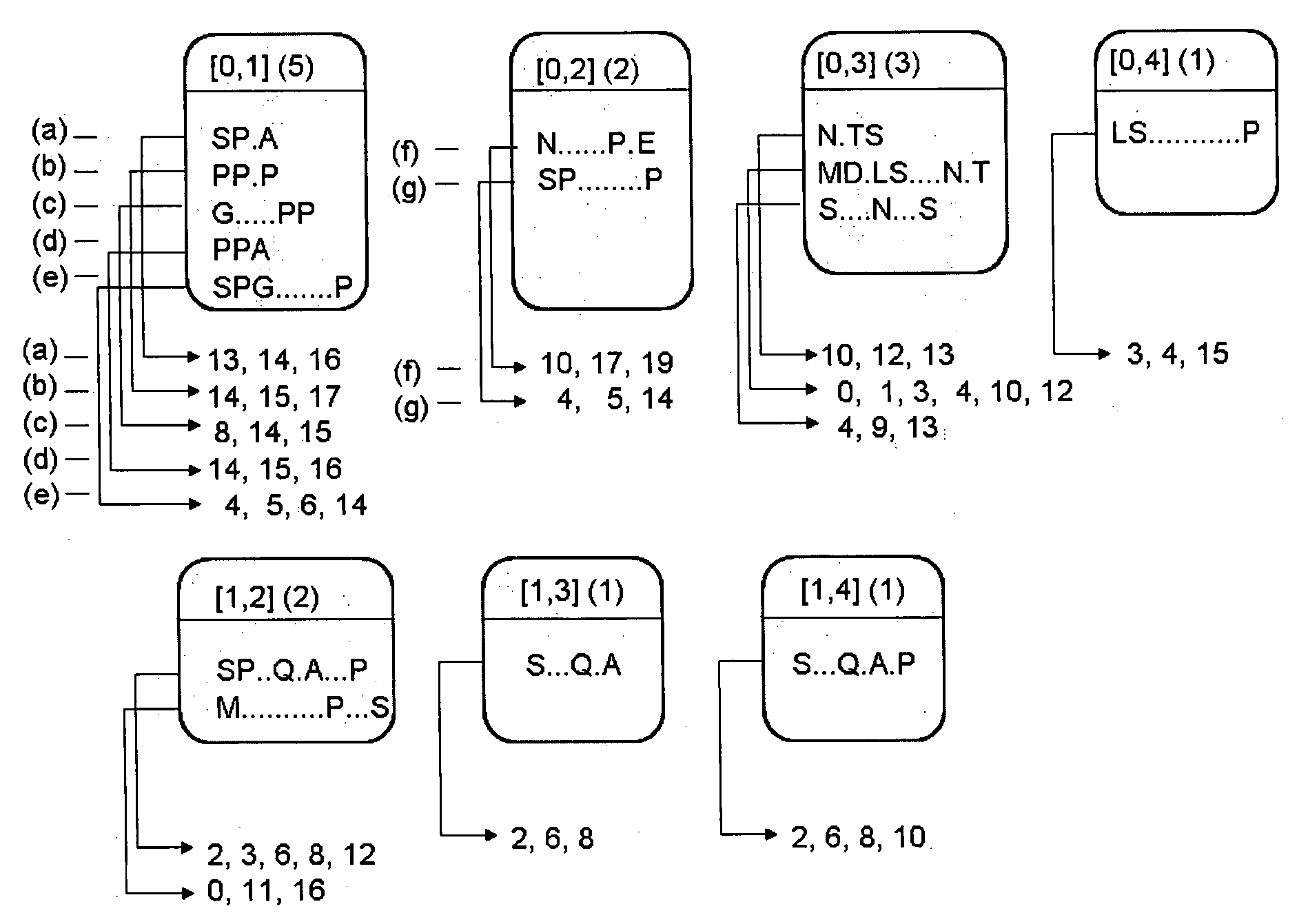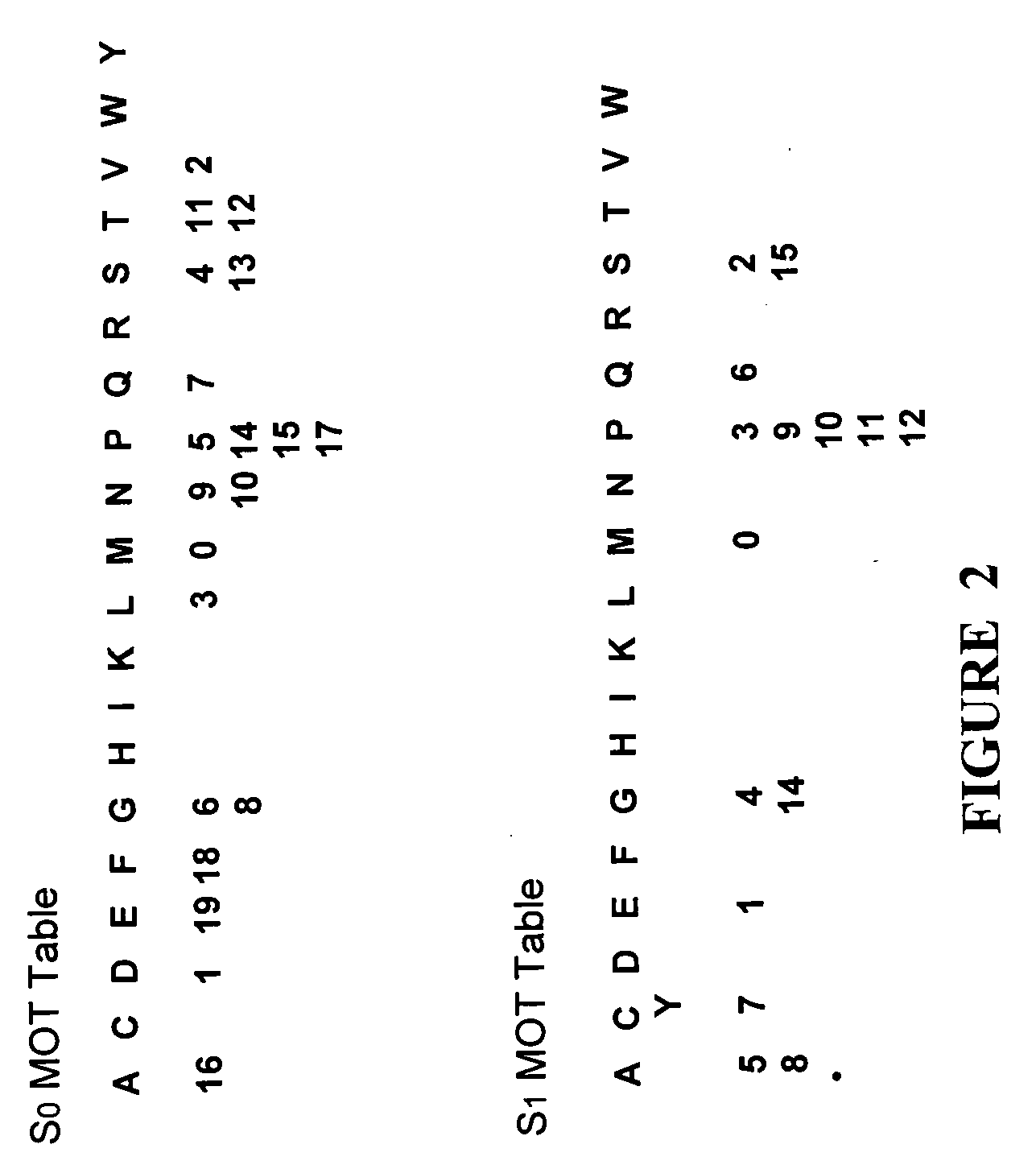Identifying patterns of symbols in sequences of symbols using a binary array representation of the sequence
- Summary
- Abstract
- Description
- Claims
- Application Information
AI Technical Summary
Benefits of technology
Problems solved by technology
Method used
Image
Examples
Embodiment Construction
[0049] Throughout the following detailed description, similar reference numerals refer to similar elements in all figures of the drawings.
[0050] In one aspect the present invention is directed toward a computer-implemented method useful in identifying patterns of symbols in a set “S” containing “k” sequences of symbols, where k is greater than two (where k>2), that is, there are three or more patterns, thus: [0051] S={S0, S1, S2, . . . , Sk-1}.
[0052] The basic implementation of the method of the present invention may be understood by considering the following set of five sequences S0 through S4:
S0:MDVLSPGAGNNTTSPPAPFE;S1:MESPGAQCAPPPPAGS;S2:MSPLNQSAEGLPQEASNRS;S3:MDFLSSSDQNATSEELLNRMPSK;S4:MALSYRSVELQSAIPEHIQS.
[0053] By convention, each sequence is assigned a predetermined sequence index, indicated by the respective subscripts 0, 1, 2, 3, and 4, to order the sequences. The sequence indexes (or the more preferable plural form used herein, “indices”) are assigned in any desired ma...
PUM
 Login to View More
Login to View More Abstract
Description
Claims
Application Information
 Login to View More
Login to View More - R&D
- Intellectual Property
- Life Sciences
- Materials
- Tech Scout
- Unparalleled Data Quality
- Higher Quality Content
- 60% Fewer Hallucinations
Browse by: Latest US Patents, China's latest patents, Technical Efficacy Thesaurus, Application Domain, Technology Topic, Popular Technical Reports.
© 2025 PatSnap. All rights reserved.Legal|Privacy policy|Modern Slavery Act Transparency Statement|Sitemap|About US| Contact US: help@patsnap.com



